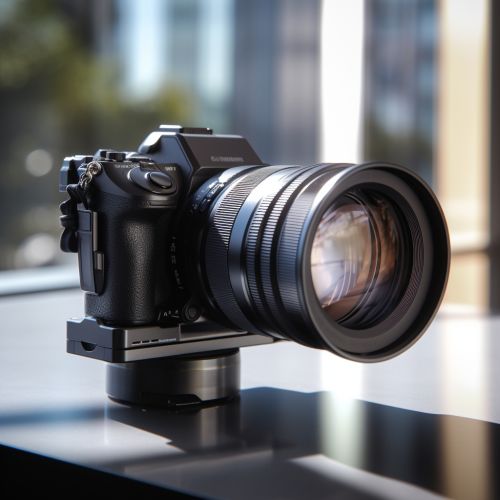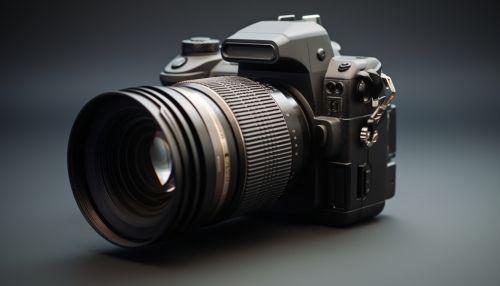Digital camera
Overview
A digital camera is a device that captures photographs in digital memory. Unlike film cameras, which record images via a chemical reaction on light-sensitive film, digital cameras use digital image sensors to capture images. These images are stored in digital form, allowing them to be viewed, edited, and stored on various digital devices.
History
The development of digital camera technology is directly related to the evolution of digital computing. Early digital cameras were essentially video cameras that took individual frames. The first digital camera was invented by Steven Sasson in 1975 at Eastman Kodak. Sasson's camera used a charge-coupled device (CCD) to capture images, a technology still used in some digital cameras today.
Types of Digital Cameras
There are several types of digital cameras, each designed for a specific type of photography. These include compact digital cameras, digital single-lens reflex (DSLR) cameras, mirrorless interchangeable-lens cameras (MILCs), and digital rangefinders.
Compact Digital Cameras
Compact digital cameras, also known as point-and-shoot cameras, are designed for simple operation. They typically include autofocus and automatic exposure options, making them suitable for casual photography.
Digital Single-Lens Reflex Cameras
Digital single-lens reflex (DSLR) cameras use a mirror system to direct light from the lens to the viewfinder. They offer interchangeable lenses and have large sensors, providing high-quality images and a wide range of photographic options.
Mirrorless Interchangeable-Lens Cameras
Mirrorless interchangeable-lens cameras (MILCs) are similar to DSLRs but do not include a mirror mechanism, making them lighter and more compact. They also offer interchangeable lenses and high-quality images.
Digital Rangefinders
Digital rangefinders are a type of digital camera that includes a range-finding focusing mechanism. They are typically smaller and lighter than DSLRs and offer superior image quality.
Image Sensors
Digital cameras capture images using a digital image sensor. There are two main types of image sensors used in digital cameras: charge-coupled devices (CCDs) and complementary metal-oxide-semiconductor (CMOS) sensors.
Charge-Coupled Devices
CCDs are a type of image sensor that transport electric charge across the device. They offer high-quality image capture but consume more power than CMOS sensors.
Complementary Metal-Oxide-Semiconductor Sensors
CMOS sensors use less power than CCDs and are more commonly used in modern digital cameras. They offer comparable image quality to CCDs and are capable of capturing video as well as still images.
Image Processing
Once an image is captured by the sensor, it is processed by the camera's image processor. This includes noise reduction, white balance, and color balance. The processed image is then stored in the camera's memory.
Storage
Digital cameras store images on removable memory cards. The most common types of memory cards are Secure Digital (SD) cards, CompactFlash (CF) cards, and XQD cards. The choice of memory card can impact the speed at which images are written to and read from the card.
Connectivity
Digital cameras can connect to other devices via USB, HDMI, or wireless connections like Wi-Fi and Bluetooth. This allows for the transfer of images and videos to computers, printers, and other devices.
Power
Digital cameras are typically powered by rechargeable lithium-ion batteries. The power consumption of a digital camera can vary depending on the model and the features it includes.


